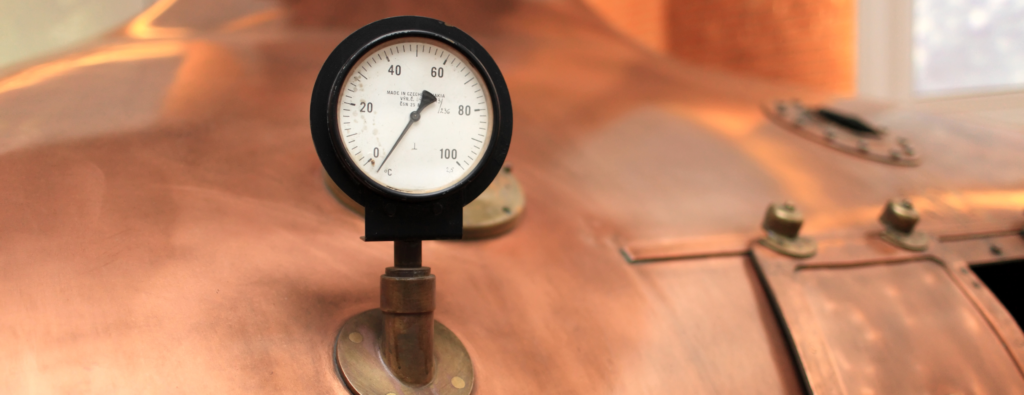Brewing: Past, Present, and Future

Brewing is both art and science with a long tradition. In fact, the history of beer goes back thousands of years. To understand where brewing is headed, it’s important to understand how the brewing process has evolved to remain ahead of the competition and anticipate what’s next.
Let’s take a look at the history of beer and the fermentation process through the ages — past, present, and future.
Ancient Traditions
The history of beer is a long, rich tale. Beer is one of the oldest beverages in civilization, and variations of it have been brewed around the world. Evidence of individual and home beer brewing dates back as far as 7000 BCE, from civilizations in China, Mesopotamia, and Egypt.
When it comes to more commercial applications of the brewing process, archaeologists have actually recently discovered evidence of one of the oldest breweries in ancient Egypt, dating back 5,000 years. In Egypt, beer was a drink for kings and specific rituals, and this brewing facility was built to meet the royal court’s needs in quantities close to 5,000 gallons per batch.
Fast forward a few thousand years to the Middle Ages, and it’s clear that beer remained an important part of life around the world. In Medieval Europe, for example, brewing was an essential industry, with brewers forming guilds to help elevate their trade, and patron saints named for the various parts of the fermentation process. These guilds developed many types of brews, setting the gold standard for beer flavors enjoyed to this day.
The Industrial Revolution
Like many other products and industries, beer and breweries benefited from new technologies and production methods during the Industrial Revolution. Beginning in the 1760s, tools were invented that are now staples of the brewing process; the thermometer, the hydrometer, and the drum roaster all helped improve the efficiency and flavor of brewing.
At the same time, Louis Pasteur was studying microorganisms and discovered the role of yeast in the fermentation process. He shared that knowledge with brewers, and this knowledge helped fine-tune the taste of beer and prevent souring and spoilage. Last but not least, the Industrial Revolution led to innovation in bottling technologies. This resulted in the first brown beer bottles that prevented UV rays from penetrating and caused skunking, which meant beer could be transported over longer distances.
Last but not least, the Industrial Revolution led to innovation in bottling technologies. This resulted in the first brown beer bottles that prevented UV rays from penetrating and caused skunking, which meant beer could be transported over longer distances.
Prohibition and the Aftermath
At the start of the Prohibition era of the 1920s and early 1930s, hundreds of breweries existed around the United States. Prohibition caused many of them to go out of business, leading to bootleggers producing beer in backyard operations. Quality was compromised, and beer was often watered down to help stretch it further.
This trend of watering down beers for bootlegging purposes stuck in the United States, and paler brews and light beers remain popular today, almost a hundred years after Prohibition ended. Prohibition also led to the consolidation of American breweries into a few major brands that we’re familiar with to this day, leaving little room for competition or deviation from standard flavors.
Present Day: The Craft Brewing Movement
With the start of a new millennium, a new day dawned for brewing. Palates had become more refined, and people were more willing to explore different flavors and tastes. What started as the microbrewing movement was renamed the craft brewing movement, and smaller breweries began popping up all over the country.
Today, there are more than 9,000 breweries operating in the United States, which is an all-time record in the history of beer. While the major brands remain dominant in the scene, this revolution is the first time in close to a hundred years that smaller breweries are setting the trends with the major brands following their lead. Craft breweries face the challenge, however, of constantly innovating and producing at scale while considering what will sell to their target audience.
The Future of Brewing
Because beer is having a renaissance moment, modern brewers are constantly looking for ways to compete with local breweries as well as the major brewers and distributors. To remain competitive and maintain production brewing process efficiency, breweries need to embrace technologies that help them perfect their product and their processes.
Just as the Industrial Revolution introduced innovative processes and equipment that have permanently altered the course of brewing, the digital age and “Internet of Things” era are shaping the way we work as brewers. Technologies like BrewMonitor® allow brewers to monitor fermentation in real-time, from any connected device.
Within the BrewMonitor® system, pre-built dashboards allow brewers to closely monitor quality markers within your tank throughout the fermentation process, including pH, dissolved oxygen, gravity, pressure, fluid temperature, ambient temperature, and conductivity — all without ever opening your tank.
If you’re interested in being part of the next era of the history of beer, request a demo today.
Get a unique look inside fermentation tanks.
See how monitoring fills in the picture with never before seen data straight to your computer, tablet or phone, 24-7-365.

